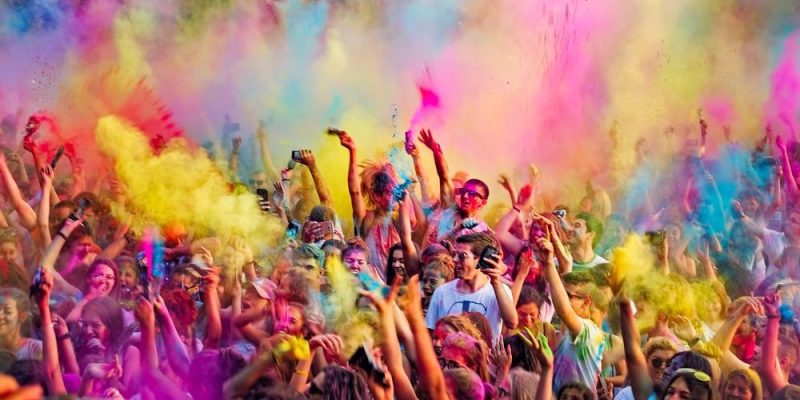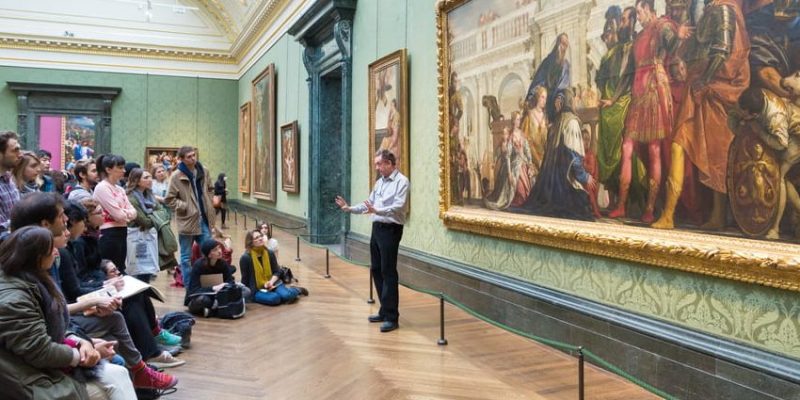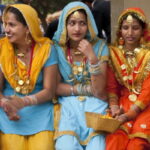We explain what cultural activities are and why they are important. Also, what types exist and the characteristics of each one.

What are cultural activities?
Cultural activities or cultural events are those activities that culturally enrich the population, that is, they feed their thinking, cultivate their sensitivity and reinforce their values. identity, generally through artistic, literary, social and community expressions. These activities can be of very different kinds, both public and private, free or paid, and they contribute significantly to people's quality of life.
Culture is part of human needs ; not only in terms of entertainment and distraction, but also to the creation of significant social ties and the strengthening of a cultural identity. All of this translates into the transmission of beliefs, values, points of view, reflections and historical memory from one generation to the next, something that is essential for national identity and that also supports the cultural industries of each country.
Cultural activities can be of very different types, according to the disciplines and procedures involved in each case. Thus, we can distinguish between:
- Recreational activities. They are those whose primary purpose is recreation, and for this they resort to means and distraction techniques that generate pleasure in the individual and take them out of their daily lives for a while. For example: cinema, reading comics.
- Socialization activities. They are those that provide people with an environment conducive to strengthening group ties or belonging to the collective, as well as to expand the social circle and establish meaningful interpersonal relationships. For example: dances and concerts, marches and processions.
- religious activities. They are those that strengthen people's bond with their established religion, or that allow them to explore their conceptions of divinity and the meaning of life. For example: masses and rituals.
- Folkloric activities. They are those that keep tradition and popular memory alive, through manifestations in which the arts are combined and that are transmitted from generation to generation, generally orally. For example: traditional dances, carnival, national holidays.
- Artistic activities. They are those that promote the production, appreciation and consumption of art in its different expressions (music, theater, cinema, literature, photography, sculpture, painting, among others). For example: museum exhibitions, poetry recitals, architectural tours.
- Pedagogical activities. They are those that seek to teach and educate people, especially young people and children, so that they know more and better their local reality, their tradition or even the sciences. For example: children's museums, science fairs, craft workshops.
- Memorial activities. They are those that are responsible for keeping the national history alive, commemorating the great deeds and stories, in order to promote national identity and the sense of patriotism. For example: parades, national holidays, erection of historical monuments.
Importance of cultural activities
Cultural activities are vital for a good life in society. Thanks to them Individuals can construct common stories that give them a shared identity and they can thus feel part of something greater than themselves.
Since the human being is a gregarious and social animal, Life outside of culture is generally experienced with pain and loneliness since we all want to belong to a community and a tradition, that is, to a way of thinking and feeling that links us to past generations (that is, cultural heritage).
Because cultural activities provide much more than leisure and recreation to the individuals of a society, States dedicate part of their efforts and budgets to the promotion of culture, since Without it, a society will be much more likely to adopt values foreign to its history and you will have difficulty reflecting on your own existence, your needs and your particular dilemmas.
Examples of cultural activities

Some examples of cultural activities are:
- book fairs. Where people can buy books, get involved with publishing projects and discover local and international writers.
- Musical concerts. In which people enjoy the productions of marching bands or become familiar with the great pieces of the past.
- plays. In which the great stories of humanity or the nation in question are staged.
- Craft workshops. In which people are taught to handle different materials (textiles, ceramics and other types) and are invited to freely express their subjectivity with manual work.
- Gastronomic fairs. In which people can try new preparations, learn about foreign gastronomic traditions and buy unusual foods.
- Folklore celebrations. In which people gather to sing, dance, wear specific dresses or costumes, and remember their ancestors or their own tradition.
- film screenings. In which you can enjoy classic or avant-garde works, local or international cinema.
- poetry recitals. In which poets read their works to the public and make themselves known.
Continue with: Social practice
References
- “Culture” on Wikipedia.
- “Family cultural activities: why they are so important” in Peñaclara (Spain).
- “What are cultural events, how are they classified and planned?” in Culturamas (Spain).





